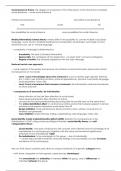Samenvatting
Summary IPC Walther
- Vak
- Instelling
Hierin heb ik het artikel van Walther samengevat! Voor verdere verdieping, verwijs ik naar mijn document waarin ik Hargie heb samengevat :) Ik heb een 8.5 gehaald voor dit vak, successsss <3
[Meer zien]





